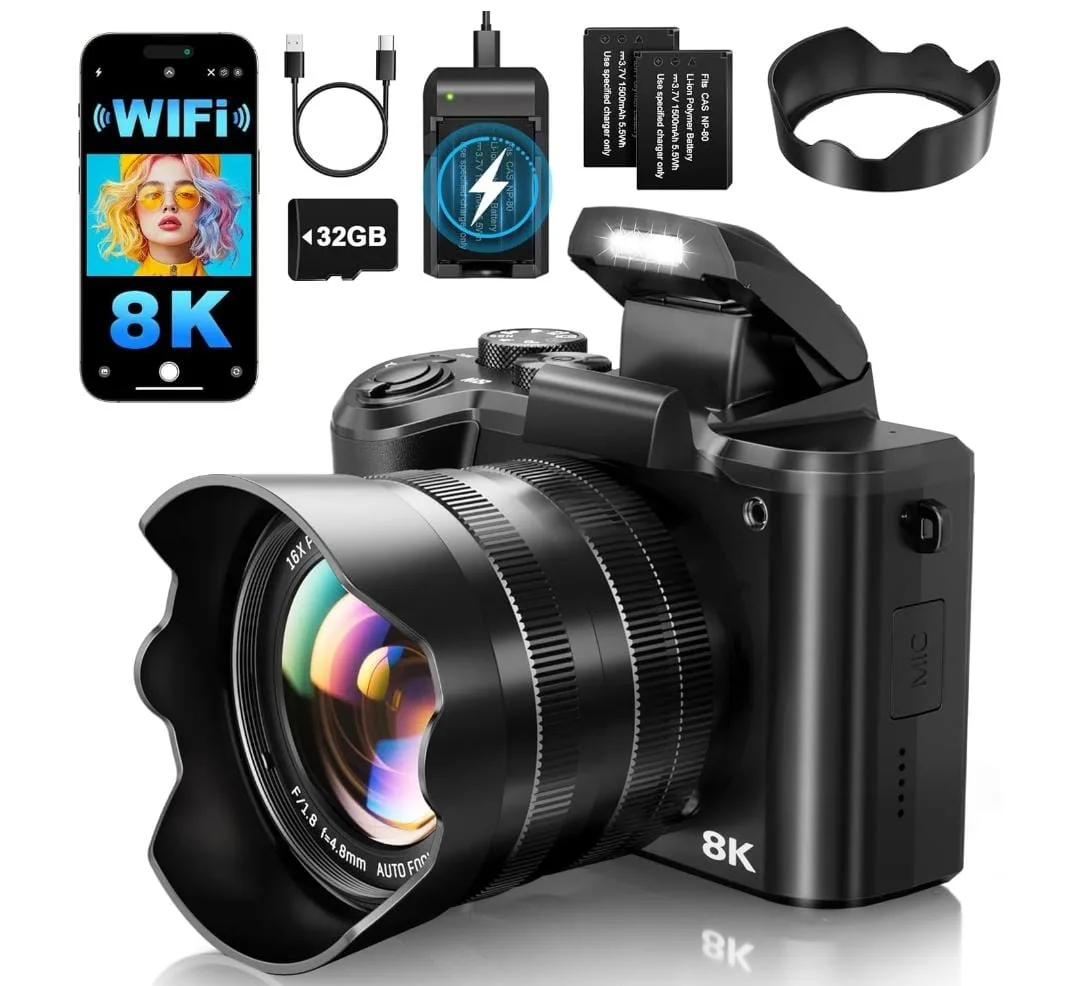A Guide to Durability: Shock-Proof Cameras and Shock-Resistant Watches
For individuals seeking robust electronics, consider models such as the Nikon Coolpix W300 or the Olympus Tough TG-6. These robust devices are engineered to withstand significant impacts and extreme environments, making them ideal for outdoor adventures. Look for features like a rugged exterior and reinforced glass for added protection.
When it comes to wristwatches, the Seiko Prospex series offers exceptional resilience, with models equipped with sapphire crystals that resist scratching and a sturdy construction designed for outdoor use. Check for water resistance ratings, which often signal improved durability against accidents involving moisture.
For both types of products, reviews and certification standards can provide insight into their performance. Look for MIL-STD-810 ratings in cameras, as this indicates military-grade toughness. For watches, ISO 2281 certification can assure longevity against water exposure. Each data point contributes to informed purchasing choices, blending quality with functionality.
Understanding Impact Resistance in Cameras
Choose models with a minimum impact rating of 1.2 meters (4 feet) or more for reliable use in rugged conditions. Manufacturers typically provide this information in the specifications section of the product.
Look for reinforced materials such as magnesium alloy bodies or rubber bumpers, which significantly enhance resilience against drops and shocks. Key features to consider include:
- Shock Absorbing Design: Cameras featuring strategically placed cushioning can withstand more force during impacts.
- Weather Sealing: While primarily for moisture and dust protection, weather-sealed mechanisms often correlate with sturdiness.
- Durable Lens Options: Select models with impact-resistant glass to avoid scratches and fractures.
Consider reading user reviews on platforms like LensGearPro to gain insights into real-world performance. Photographers often share their experiences regarding how well models withstand extreme conditions.
Finally, prioritize testing demonstrations if possible. Manufacturers sometimes allow you to experience impact resistance firsthand at trade shows or stores, which can aid in making educated choices.
Key Features of Scratch-Resistant Timepieces
Look for sapphire crystal as the leading choice for surface protection. This material is renowned for its exceptional hardness, second only to diamond, providing unparalleled resistance against scratches.
Coating Technologies
Anti-reflective coatings can enhance visibility, particularly in bright environments. These treatments reduce glare and improve readability, ensuring that the dial remains legible regardless of lighting conditions.
Robust Body Construction
Materials such as stainless steel or titanium not only contribute to the overall aesthetics but also add a layer of protection against impacts and abrasions. Consider timepieces with a case that has undergone surface hardening processes, increasing resilience further.
Water resistance ratings are also critical; timepieces with higher water resistance often feature reinforced seals that can withstand elements, reducing the likelihood of accidental damage from exposure.
Regular maintenance, including professional cleaning and inspection, can extend the lifespan of any timepiece. Even a hardy model benefits from occasional care to maintain its protective features.
Top Shock-Resistant Models for Outdoor Activities
The Olympus Tough TG-6 stands out for its waterproof, freezeproof, and crushproof features, making it ideal for adventurous outings. With a fast f/2.0 lens and 12 MP sensor, it excels in low-light situations while offering advanced shooting modes.
Best Features Comparison
| Model | Waterproof Depth | Shockproof Height | Battery Life | Weight |
| Olympus Tough TG-6 | 15 m | 2.1 m | 300 shots | 253 g |
| GoPro Hero 11 | 10 m | 2 m | 270 shots | 154 g |
| Nikon W300 | 30 m | 2.4 m | 350 shots | 231 g |
| Fujifilm FinePix XP140 | 25 m | 1.2 m | 240 shots | 207 g |
The GoPro Hero 11 offers versatile filming options with 5.3K video resolution and HyperSmooth stabilization, perfect for action sports. It remains lightweight and compact, easily attaching to gear.
The Nikon W300’s impressive water resistance and ruggedness make it an excellent choice for underwater photography, especially in challenging environments. Its GPS capabilities enhance navigation during explorations.
For those looking for balance in performance and lightweight design, the Fujifilm FinePix XP140 is a solid alternative, catering to casual photographers hiking or camping. All models highlighted are commendable contenders for anyone seeking reliability in challenging conditions.
For in-depth reviews on these and more models, visit Cameras Review. To explore durable timepieces, check out Wrist Chronicles.
Comparing Material Technologies in Watch Manufacturing
Materials play a pivotal role in crafting resilient timepieces. Focus on titanium, ceramic, and carbon fiber for remarkable strength-to-weight ratios and resistance to environmental stressors.
Titanium: Lightweight Strength
Titanium stands out for its low density and excellent tensile strength. Watches made from titanium are significantly lighter than steel counterparts while providing superior resistance to corrosion and scratches. Models using this material often feature a matte finish, which can hide minor wear more effectively than shiny surfaces.
Ceramic: Hardness and Aesthetic Appeal
Ceramic is an advanced material known for its exceptional hardness. This attribute makes it incredibly resistant to scratches and abrasions, ensuring a polished appearance over time. Furthermore, colored ceramics can provide unique aesthetic options since they retain their hue without fading. In addition, ceramic watches offer intriguing temperature resistance, remaining cool to the touch in hot conditions.
Investigate hybrid materials that combine metals with ceramics or composites. These innovations can yield timepieces with both high-performance qualities and distinct visual appeal, catering to diverse consumer preferences in design and functionality.
Explore brands utilizing these materials to assess craftsmanship and longevity. Prioritize models with detailed specifications on material technologies to ensure your selection meets both your lifestyle needs and aesthetics.
Maintenance Tips for Longevity of Durable Gear
Regularly check seals and gaskets to ensure they remain intact and free from debris. This prevents moisture and dirt from entering sensitive areas and prolongs functionality.
Opt for soft microfiber cloths to clean screens and surfaces, avoiding rough materials that can cause scratches or abrasions. Maintain clarity and appearance with delicate care.
Store in protective cases or pouches when not in use, particularly if exposure to harsh environments is anticipated. This minimizes impact and prevents accidental damage during transportation.
Periodically inspect straps and mounts for wear or damage. Replacing these components at the first sign of deterioration can prevent further issues and maintain safety during use.
For devices featuring batteries, charge at recommended intervals and avoid letting them completely discharge to extend overall battery lifespan. Follow manufacturer’s guidelines for optimal battery care.
Utilize lens and screen protectors as an additional layer of defense against scratches. These accessories are often more economical to replace than the primary components themselves.
Keep your equipment clean from dust and grime by using a blower or soft brush. Make it a habit to ensure functionality is not hindered without risking abrasion from direct contact.
Be mindful of temperature extremes. While designed to withstand challenging conditions, consistently exposing items to excessive heat or cold can negatively impact their performance.
Lastly, review the manufacturer’s recommendations for servicing or calibration, ensuring all gear operates optimally and prolonging its lifespan through professional care when needed.
Q&A:
What features should I look for in shockproof cameras?
When selecting a shockproof camera, consider several key features. First, check the camera’s drop resistance rating, which typically indicates how far it can fall without sustaining damage. Look for cameras with durable outer casings made from materials like rubber or reinforced plastics that can absorb shocks. Additionally, assess the weatherproofing capabilities, such as water and dust resistance, which often go hand-in-hand with durability. Strong battery life and ease of use in various environments also play significant roles in ensuring a reliable experience. Lastly, read user reviews for real-world insights on performance in rugged conditions.
Why are scratch-resistant watches important, and what materials should they be made from?
Scratch-resistant watches are essential for maintaining the appearance and functionality of a timepiece over time. A watch with a scratched face can be challenging to read and may diminish its aesthetic appeal. Typically, scratch-resistant watches feature faces made from materials like sapphire crystal, mineral glass, or acrylic. Sapphire crystal is the hardest and most resistant to scratches, followed by mineral glass, which offers a good balance of durability and clarity. Acrylic is more prone to scratching but can be easily polished. Choosing the right material will depend on how and where you plan to wear the watch, as well as your personal style preferences.





